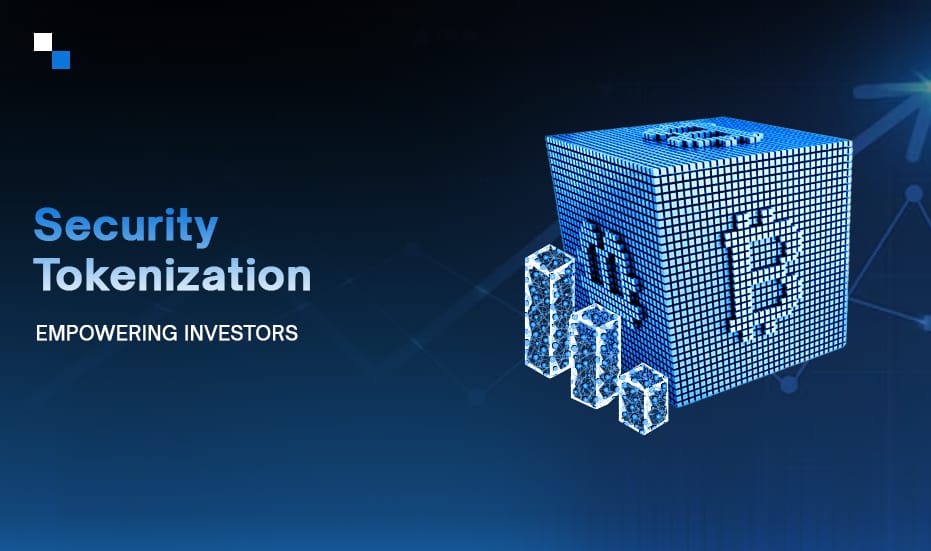In recent years, the financial landscape has undergone dramatic changes, driven by technological innovation. One of the most exciting developments in the world of finance is the rise of security tokenization. Powered by blockchain technology, security tokenization represents a fundamental shift in how traditional assets such as equities, bonds, real estate, and commodities are issued, traded, and managed.
With its promise to revolutionize markets by increasing liquidity, reducing inefficiencies, and enhancing transparency, security tokenization is steadily gaining traction.
Growth Statistics
The market for tokenized securities was valued at approximately USD 202 billion in 2023 and is expected to grow significantly, reaching an estimated USD 301 billion by 2030. This growth represents a compound annual growth rate (CAGR) of 5.96% from 2024 to 2030. It is due to the increased recognition of the benefits that tokenization brings to traditional asset classes.
Notably, the U.S. Securities and Exchange Commission (SEC) and other global regulators have shown increasing willingness to work within the blockchain framework, making the environment ripe for tokenized security solutions to flourish.
Understanding Security Tokenization
Security tokenization is the process of converting traditional financial assets (like stocks, bonds, or real estate) into digital tokens that represent ownership or a stake in that asset. These tokens are then issued and managed on a blockchain, which is a decentralized, immutable, and transparent digital ledger.
Unlike regular cryptocurrencies such as Bitcoin or Ethereum, security tokens represent real-world assets and are subject to financial regulations. These tokens can be bought, sold, and traded on blockchain-based platforms, allowing for more efficient trading and lower transaction costs compared to traditional financial systems.
Security tokenization comes with several key benefits:
- Increased Liquidity: Traditional financial assets like real estate or fine art are often illiquid. Tokenizing these assets enables fractional ownership and opens up the market to a broader pool of investors.
- Enhanced Transparency: Blockchain provides a transparent and immutable record of all transactions, which significantly reduces fraud and improves trust.
- Lower Costs: By cutting out intermediaries such as brokers and clearinghouses, security tokenization can reduce transaction fees and the overall cost of asset management.
- Access to Global Markets: Blockchain-based platforms enable global access to investment opportunities, overcoming the geographical barriers that often restrict access to traditional markets.
Blockchain’s Role in Security Tokenization
Blockchain technology is the cornerstone of tokenization of securities. It ensures that the ownership and transfer of assets are conducted in a secure, transparent, and automated manner through smart contracts—self-executing contracts where the terms of the agreement are written into code.
The use of blockchain offers significant advantages for security tokenization:
- Decentralization: Blockchain eliminates the need for intermediaries, enabling peer-to-peer transactions that are both more secure and efficient.
- Immutability: Transactions recorded on a blockchain cannot be altered or tampered with, ensuring that records of asset ownership and transfers are permanently preserved.
- Smart Contracts: These allow for the automation of various aspects of asset management, including dividend payments, ownership transfers, and compliance checks, significantly reducing administrative overhead.
By leveraging blockchain’s features, security tokens become far more manageable, secure, and accessible than their traditional counterparts.
The Global Surge in Security Tokenization
Over the past few years, security tokenization has gained significant attention from institutional investors, regulators, and financial markets. The global market for tokenized securities is expected to experience rapid growth as blockchain adoption increases and regulatory frameworks evolve.
Notable Milestones and Projects
Several leading projects and firms are pushing the boundaries of security tokenization and setting the stage for its mainstream adoption. Some of the most notable projects include:
- Polymath – Polymath is one of the pioneers in security tokenization, providing a platform for the creation, issuance, and management of security tokens. Polymath’s Polymesh blockchain is specifically designed to meet the regulatory and legal requirements for security token offerings.
- Securitize – Securitize has emerged as a leader in the space, offering an end-to-end solution for tokenizing assets. The platform has worked with companies like Banco Santander and Circle to facilitate the issuance of security tokens, which has further legitimized the space.
- tZERO – tZERO, a subsidiary of Overstock.com, has launched a blockchain-based platform to facilitate the trading of security tokens. Their focus on compliance and regulatory adherence has made them one of the most recognized names in tokenized asset trading.
- Desico – Desico is focused on tokenizing equity in early-stage startups and enabling regulated security token offerings (STOs) for businesses looking to raise funds in compliance with financial regulations.
Regulatory Landscape
One of the significant challenges facing the widespread adoption of security tokenization is the regulatory environment. Governments around the world are still working to establish clear guidelines for the legal treatment of tokenized security offering, and progress is being made.
In the United States, the Securities and Exchange Commission (SEC) has taken steps to define how existing securities laws apply to blockchain-based tokens. In 2020, the SEC issued a No-Action Letter to INX, a platform that issued tokenized security. This letter was seen as a significant step forward in providing clarity on how tokenized securities will be regulated.
Similarly, the European Union has also moved towards providing a comprehensive regulatory framework for digital assets with the MiCA (Markets in Crypto-Assets) Regulation, which is expected to pave the way for the legal and regulatory certainty needed for the wider adoption of security tokens in Europe.
Case Studies: Real-World Examples of Security Tokenization
- Aspen Digital – In 2020, the Aspen Ski Resort in Colorado became the first major real estate asset to be tokenized on the Ethereum blockchain. This transaction allowed investors to buy shares in the resort in the form of security tokens, with a reported value of around $18 million. The deal was groundbreaking because it demonstrated that high-value real estate could be divided into smaller, tradeable units.
- The Tezos Blockchain – In 2019, St. Regis Aspen Resort completed a security token offering (STO) using the Tezos blockchain, raising $18 million. This was a major milestone for the tokenized real estate sector, signaling that blockchain could offer a more efficient, cost-effective method of raising capital.
- Tokeny Solutions and the Luxembourg Stock Exchange (LuxSE) – In 2019, Tokeny Solutions partnered with the Luxembourg Stock Exchange to issue tokenized bonds, offering a secure and compliant platform for investors to trade digital bonds. The collaboration also underscored the growing importance of regulatory-compliant solutions in the tokenization space.

The Future of Security Tokenization
The future of security tokenization looks promising. As blockchain technology continues to mature and the regulatory environment becomes clearer, we can expect to see increased adoption across various asset classes.
Some of the key trends that will drive the future of security tokenization include:
- Increased Tokenization of Real-World Assets: More physical assets like real estate, art, and commodities are likely to be tokenized, providing new investment opportunities.
- Greater Institutional Adoption: As traditional financial institutions begin to explore blockchain technology, security tokens could become mainstream investment vehicles for large institutions and asset managers.
- Cross-Border Trading: Blockchain’s ability to facilitate cross-border transactions will allow investors to trade security tokens globally, breaking down geographical barriers.
- Integration with DeFi: The integration of security tokens with decentralized finance (DeFi) protocols could enable new financial products, like tokenized loans or derivatives, bringing more flexibility to traditional financial markets.
Conclusion
Security tokenization represents one of the most exciting developments in the financial sector, offering substantial benefits such as increased liquidity, lower costs, and enhanced transparency. By leveraging the power of blockchain technology, the security token ecosystem is evolving rapidly, with major players and regulatory bodies working together to shape the future of global financial markets.







